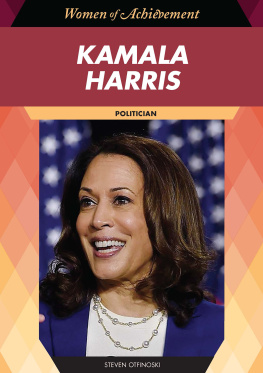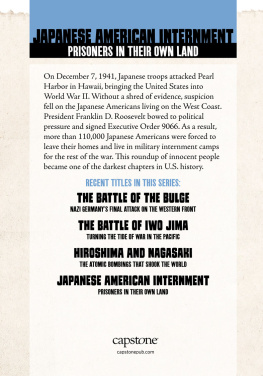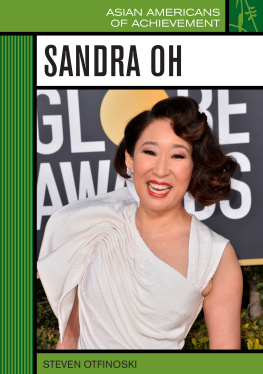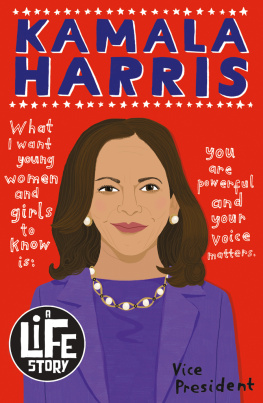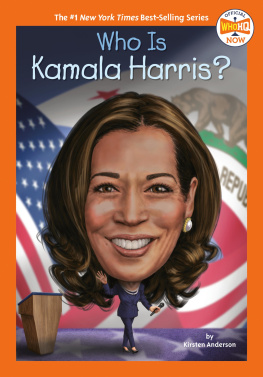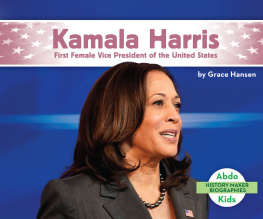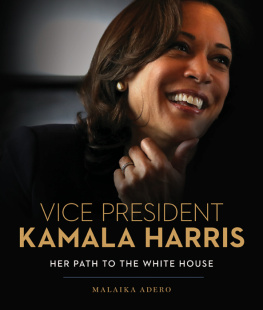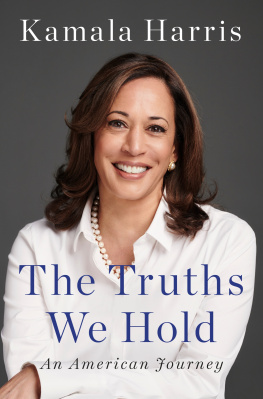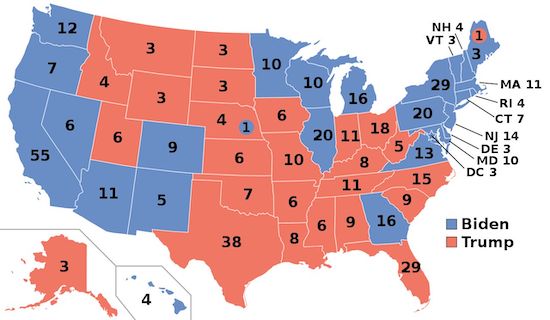Harris immediately called Biden on her cellphone. "We did it," she cried. "We did it, Joe. You're going to be the next president of the United States." The eight-second video taken of the call went viral on Twitter; within four hours of its posting had 26 million views.
Joe Biden's election to the presidency was certainly a remarkable achievement. Biden had run for president twice before, and served eight years as vice president under President Barack Obama. Now at age 78, he would become the oldest person to be elected president. But Harris's election as vice president was possibly more remarkable. She would become the first woman to serve in that office. She also became the first African American and the first Indian American to be elected vice president. As a team, Biden and Harris were the first candidates to garner more than 75 million votes in a presidential election, ever.
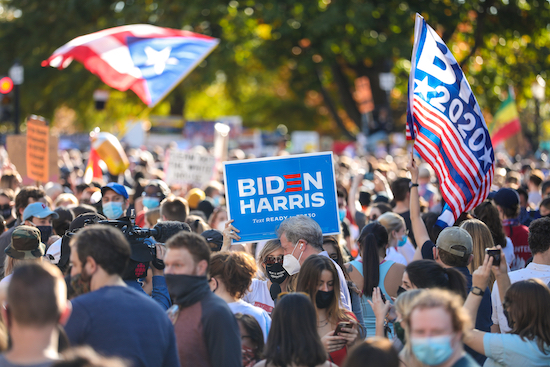
People gather at Black Lives Matter Plaza near the White House to celebrate after Joe Biden is announced President-Elect; November 7, 2020.
Source: Shutterstock.
It had been a long and grueling campaign. But now the real work would begin. The president- and vice president-elect would face enormous challenges. These included a pandemic that had taken hundreds of thousands of American lives and was still raging, and a country deeply divided in a political and cultural war. But for Harris, these were challenges she had been preparing for her entire life.
Mama's Girl
She was born Kamala Devi Harris on October 20, 1964 in Oakland, California. Her first name means "lotus flower" in Sanskrit, an ancient language of India, the homeland of her mother, Shyamala Gopalan. "A lotus grows underwater, its flower rising above the surface while its roots are planted firmly in the river bottom," Harris explained in her 2019 autobiography.
An Activist Family
The roots of social justice and activism run deep in Harris. Her maternal grandfather, P.V. Gopalan, participated in the struggle for India's independence from Great Britain. After independence was achieved in 1947, Gopalan became a senior diplomat in the new Indian government. Harris's grandmother, Rajam, was a successful community organizer who spoke out for women's rights, long neglected in India. She campaigned against spousal abuse and supported women's reproductive rights and their access to birth control.
Shyamala's parents encouraged her and her younger sisters to strive for success. She graduated from the University of Delhi at age 19 with high honors. With her parents' blessings she applied and was accepted into a doctorate program in nutrition and endocrinology at the University of California at Berkeley. She flew to America in 1958 to attend Berkeley, leaving homeland and family behind. There she met Jamaican immigrant Donald Harris, a doctoral student in economics. The two shared a commitment to social justice, marched in protests together, and eventually fell in love and married. Some of Harris's earliest childhood memories are of being wheeled around in a stroller by her mother at political rallies.
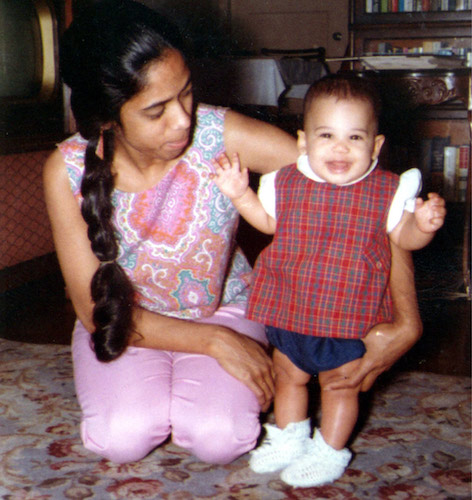
Harris with her mother, Shyamala
Source: The White House.
Life with Mother
By this time, Shyamala had earned her Ph.D., and was a dedicated breast cancer researcher. But as devoted as father and mother were to their children, the marriage didn't last. When Harris was five and her sister Maya was three, their parents separated and her father left to teach economics at the University of Wisconsin. The two girls lived with their mother, who moved them to the top floor of a duplex in a Black working class neighborhood of Berkeley known as "the flatlands." "She had only two goals in life: to raise her two daughter and to end breast cancer," Harris has written. Shyamala regularly took Kamala and Maya to India to visit with their relatives and get in touch with their Indian culture. A lover of music, Shyamala had Kamala take piano lessons three times a week from an African-American neighbor. Kamala sang in the children's choir at the 23rd Avenue Church of God, which they regularly attended. Shyamala took the girls to see shows and concerts at a Black cultural center called the Rainbow Sign. An excellent cook, when one daughter had a bad day, mother would throw her an "unbirthday party" and bake her a cake.
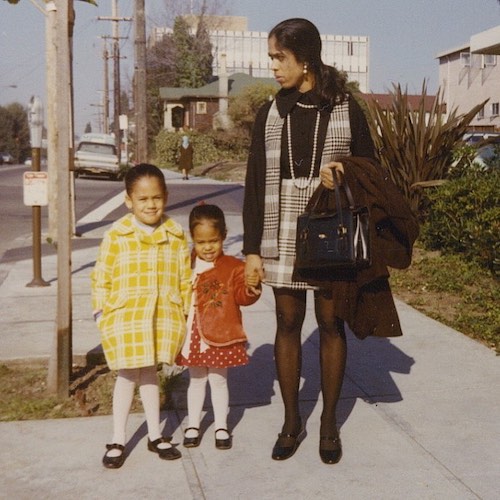
Shyamala Gopalan Harris, with her daughters Kamala and Maya
Source: Instagram: @vp
A Move to Montreal
When Kamala was 12, Shyamala took a research job at the Jewish General Hospital in Montreal, Canada, where she also got a teaching position at McGill University. The move to Canada was a challenge for the girls. "[T]he thought of moving away from sunny California in February, the middle of the school year, to a French-speaking foreign city covered in 12 feet of snow was distressing," Harris wrote in her autobiography. They moved into a housing complex where Kamala was soon finding ways to adjust to their new environment. She organized the complex's children to protest a ban on their playing soccer in the courtyard. The building's owner soon conceded to their demands.
Then the family moved to the top floor of a Victorian home in a neighborhood that bordered the affluent area called Westmount. Harris attended Westmount High School, one of the most ethnically diverse in Montreal. "In high school, you were either in the white or the Black group," recalled Kamala's best friend there, Wanda Kagen, to Dan Bielfsky of the

